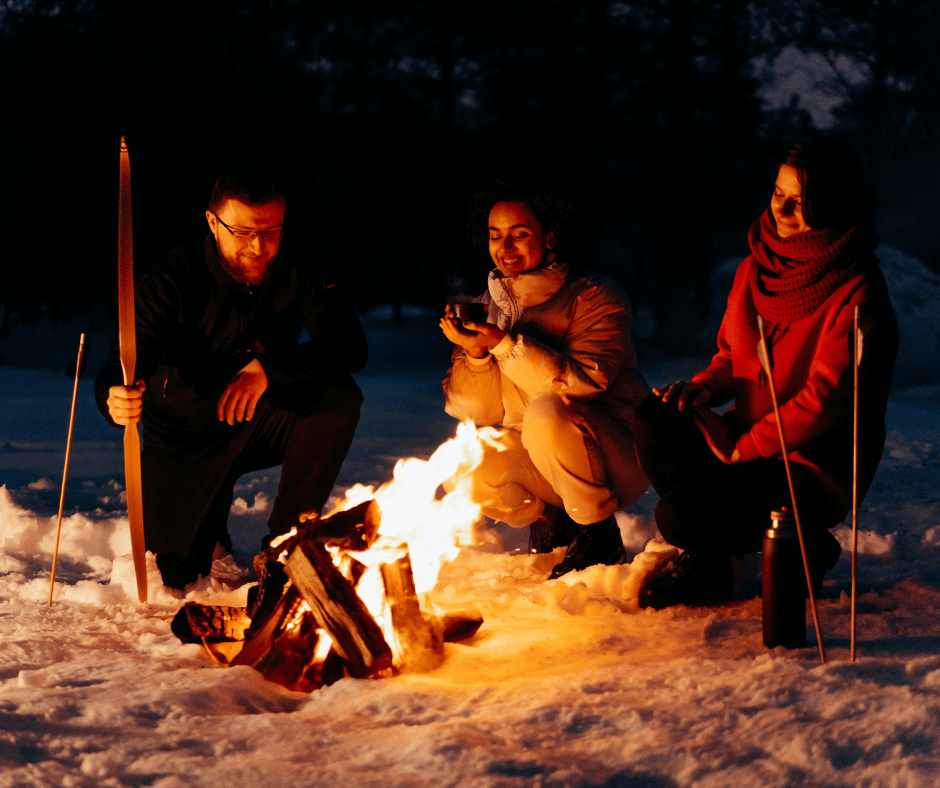Winter camping offers a unique and exhilarating experience for outdoor enthusiasts, but it also presents its own set of challenges. With the right preparation and gear, however, you can stay warm, comfortable, and safe even in the coldest of conditions. In this guide, we'll explore essential tips and gear for winter camping to help you make the most of your snowy adventures.
-
Plan Ahead: Before embarking on a winter camping trip, thorough planning is essential. Research the area's weather conditions, terrain, and potential hazards. Ensure you have the necessary permits and familiarize yourself with any regulations or restrictions. Additionally, plan your route and itinerary, accounting for shorter daylight hours and potential delays due to inclement weather.
-
Dress in Layers: Layering is key to staying warm and comfortable during winter camping. Start with a moisture-wicking base layer to keep sweat away from your skin. Add insulating layers such as fleece or down jackets for warmth, and finish with a waterproof and breathable outer layer to protect against wind and precipitation. Don't forget to wear moisture-wicking socks, insulated boots, gloves, and a hat to retain heat and prevent frostbite.
-
Invest in Quality Gear: High-quality gear is essential for winter camping, especially when it comes to your sleeping system. Choose a four-season tent designed to withstand snow and wind, along with a cold-rated sleeping bag and insulated sleeping pad. Consider bringing a tent footprint or groundsheet to protect your tent from moisture and cold ground. Additionally, pack a stove for cooking hot meals and melting snow for water, as well as a reliable headlamp or lantern for illumination during the long winter nights.
-
Stay Hydrated and Nourished: Proper hydration and nutrition are crucial for staying warm and energized in cold weather. Drink plenty of fluids throughout the day, even if you don't feel thirsty, to prevent dehydration. Pack high-energy, non-perishable foods that are easy to prepare and provide sustained fuel, such as trail mix, energy bars, and dehydrated meals. Don't forget to bring a thermos for hot beverages like tea or soup to warm you up from the inside out.
-
Practice Fire Safety: A campfire can provide warmth, light, and a morale boost during winter camping, but it also poses risks in snowy conditions. Choose a safe location away from overhanging branches, dry vegetation, and flammable materials. Clear away snow and create a fire ring or pit using rocks or a fire pan to contain the flames. Always have a means of extinguishing the fire, such as water or a fire extinguisher, and never leave it unattended.
-
Be Prepared for Emergencies: Despite careful planning and preparation, emergencies can still occur during winter camping. Carry a well-stocked first aid kit and know how to administer basic medical care for common winter injuries such as frostbite and hypothermia. Additionally, bring a fully charged cell phone or satellite communication device for emergencies, along with a map, compass, or GPS for navigation. Inform someone trustworthy of your itinerary and expected return time before setting out.
Preparing for a winter camping trip requires careful consideration and thorough planning. Here's a checklist of essential items to pack before heading out into the frosty outdoors:
Clothing:
- Moisture-wicking base layers
- Insulating layers (fleece or down jackets)
- Waterproof and breathable outer layer (jacket and pants)
- Moisture-wicking socks
- Insulated boots
- Gloves or mittens
- Hat or beanie
- Neck gaiter or scarf
- Gaiters (to keep snow out of boots)
- Spare clothing (in case of wet or soiled garments)
Shelter and Sleeping Gear:
- Four-season tent with a cold-rated sleeping bag
- Insulated sleeping pad
- Tent footprint or groundsheet
- Sleeping bag liner (for added warmth)
- Pillow or stuff sack filled with clothing (for a makeshift pillow)
Cooking and Eating Supplies:
- Stove and fuel (liquid fuel or canister stove)
- Matches or lighter (stored in a waterproof container)
- Cooking pots and pans
- Eating utensils (knife, fork, spoon)
- Insulated mug or thermos
- Biodegradable soap and sponge for dishwashing
- Food storage containers or resealable bags
- Portable water filter or purification tablets
Navigation and Safety Equipment:
- Map of the area and compass (or GPS device)
- Cell phone or satellite communication device
- Whistle (for signaling in emergencies)
- Multi-tool or knife
- First aid kit with essential supplies
- Firestarter (waterproof matches, lighter, or fire starter sticks)
- Headlamp or lantern with extra batteries
- Emergency shelter (space blanket or bivy sack)
- Rope or cord (for various tasks including hanging food)
Miscellaneous Items:
- Backpack or daypack (with a rain cover)
- Trekking poles or walking sticks
- Sunglasses and sunscreen
- Lip balm and moisturizer (for protecting exposed skin)
- Personal hygiene items (toothbrush, toothpaste, biodegradable soap)
- Camera or smartphone for capturing memories
- Notebook and pen (for journaling or sketching)
- Entertainment (book, deck of cards, or other lightweight items)
By thoroughly preparing and packing these essential items, you'll be well-equipped to stay warm, comfortable, and safe during your winter camping adventure. Remember to double-check your gear before departing and adjust your packing list based on the specific conditions and duration of your trip. With the right preparation and mindset, winter camping can be a rewarding and memorable experience.

